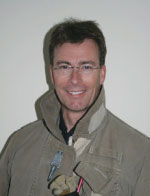
Features
Hot topics
Opinion
Fire IQ: A reminder to always watch your back
In this second instalment of Fire IQ, we broaden our scope a bit to include some lessons learned along with fire fighting terminology that we hope to help make consistent across the Canadian fire service.
July 18, 2008
By Peter Hunt
 In this second instalment of Fire IQ, we broaden our scope a bit to include some lessons learned along with fire fighting terminology that we hope to help make consistent across the Canadian fire service.
In this second instalment of Fire IQ, we broaden our scope a bit to include some lessons learned along with fire fighting terminology that we hope to help make consistent across the Canadian fire service.
As always, we’re anxious to hear from departments about terms you use and their definitions. If you agree or disagree with what you see below, or can suggest terms that will help us raise the collective fire fighting intelligence quotient, please let us know.
Check the shaft
Just as it sounds, checking the shaft means that when responding to a report of alarms or fire in a high-rise building or any structure serviced by an elevator, always remember to check the elevator shaft for evidence of smoke or fire. To accomplish this, use a flashlight (the one that you always carry) to look up and down the shaft through the small gap between the car and shaft walls.
Although not a definitive answer to the question of whether or not to use the elevator, it may give you some idea of what’s going on upstairs.
Spot the turntable
This term is a slight modification of a widely accepted fire department tactic that says the ladder truck always gets the front of the building.
Depending on the size of your department, you may operate aerials, ladders, platforms, articulating booms, snorkels, ladder towers or tower ladders and they may be front, mid or rear mounted.
While the placement of the apparatus is important, the location of the turntable in relation to the building is critical in reaching a civilian in need of rescue or in placing firefighters on or in the building efficiently.
When spotted properly, the ladder or platform will be able to reach two sides of the building and the roof (depending on height).
To accomplish this, ladder crews must be thoroughly familiar with their apparatus and, more specifically, the turntable in relation to the cab.
Treating gunshots
You’ll recall that in all your medical training, the instructor emphasized the importance of checking the shooting victim for an exit wound, as it might be more severe than the entry wound, and to treat accordingly.
However, it wasn’t until I attended my first shooting incident that a second and equally important thing to check was forever reinforced . . . the location of the shooter!
We arrived moments after the first police officer to find the victim slumped over the steering wheel of his car with an apparent gunshot wound to the head.
The officer did not appear too concerned, saying the victim was probably DOA. We were about to start our initial assessment of the victim when a second and more experienced cop arrived and asked the first cop where the shooter was. We all froze for a moment at the reply “I don’t know!” then raced for cover behind our truck.
As it turned out, the shooter (still armed) had been watching our arrival from a second-storey window overlooking the parking lot and shooting victim.
It took two hours, a full SWAT response and neighbourhood evacuation before the shooter surrendered. Watch your back!
Emergency Response Guidebook
Every so often, suppression guys need to remind themselves that hazmat incidents require a different response than typical bread-and-butter operations.
If you arrive before the hazmat team, remember to approach (or at least stage) upwind, uphill and facing away from the incident. Try to ID the product(s), size up the scene from a safe distance, immediately restrict access and egress by civilians and always refer to the Emergency Response Guidebook provided by CANUTEC.
Remember that in most cases mass casualty decontamination can be carried out successfully with gross quantities of water.
If you don’t have hazmat capabilities in your department, or if the hazmat response time is unusually long, contact CANUTEC directly and its staff will assist you.
Note: The 2008 edition of the guidebook has been printed and will be shipped to your department soon.
The lightweight truss/lightweight construction
These are generic terms that describe various types of structural components and modern construction methods that are extremely unstable in a fire environment.
They are no longer new, they are everywhere, and they are injuring and killing firefighters on a regular basis.
It’s not uncommon for first-due companies to find the floor already gone in fires in lightweight constructed homes, and roofs will not support the weight of a ladder company conducting traditional roof operations.
Command, company officers and firefighters must work together to rapidly identify lightweight components and adjust their tactics accordingly.
Horizontal ventilation (including the opening of gable ends), and defensive firefighting strategies may be your only safe options.
Peter Hunt, a 28-year veteran of the fire service, is a captain with the Ottawa Fire Services suppression division.
Print this page
Advertisement
- Depression, like fire, takes many forms
- Between Alarms: Think before you speak to preserve integrity